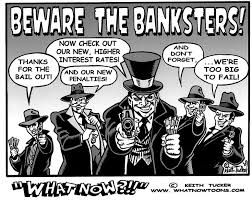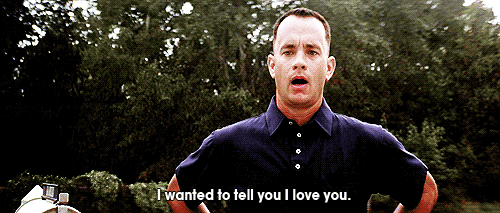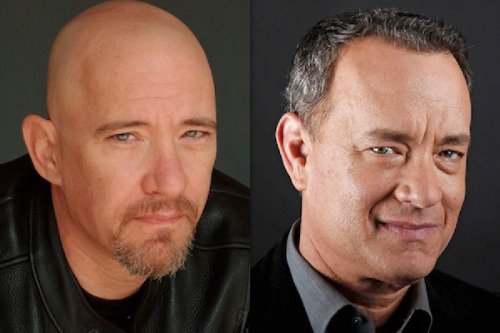Here’s What Happens to Steak When You Grill It
By Dr. Mercola
Eighty percent of US households own a grill or smoker, and 97 percent of grill owners have used it in the past year. It’s safe to say Americans love to grill, particularly on holidays like the Fourth of July, Memorial Day, and Labor Day, but also year-round (60 percent of grillers do so all year).
As for why Americans adore grilling, the Hearth, Patio & Barbecue Association (HPBA) said the top reasons include its good taste and convenience. Many also find it personally satisfying to grill outdoors while others find it a great way to entertain and spend time at home.
 What Happens to Meat When You Grill It?
What Happens to Meat When You Grill It?
If you’ve ever wondered about the science behind grilled meat, check out TIME’s video, above. It starts out with an explanation of what makes red meat red, and contrary to popular belief, it isn’t blood.
The red liquid is actually a mixture of water and a protein called myoglobin, whose purpose is to help ship oxygen to muscle cells. Myoglobin is deeply pigmented, which is why the more myoglobin a meat contains, the darker (or redder) the meat will be.
The level of myoglobin in meat is what ultimately dictates whether it will be “red,” “dark,” or “white.” The muscles in red meat are used for standing, walking, and other frequent activity, and they’re made up of slow-twitch muscle fibers. Red meats’ high levels of myoglobin make it red or dark in color.
The color changes that occur as meat is cooked are also due to myoglobin. In red meat, myoglobin changes from red to tan and grayish brown as it is heated. As reported by The New York Times, this color change also has to do with moisture, which is why well-done meat that’s turned gray-brown is often dry:
“Oxygenated myoglobin is red, but when its structure is changed by heat or by other molecules, it changes color. That’s why redness in cooked meat signifies juiciness: As meat cooks, the heat causes the other meat proteins to coagulate and squeeze out their moisture.
Myoglobin stays unchanged and red as the meat juices flow, then turns from red to gray-brown as the release of moisture ends and the meat becomes dry.”
The Maillard Reaction is also involved. This occurs due to a chemical reaction between amino acids and sugars in the meat, which results in browning as well as the flavor of cooked meat.
You can further alter the flavor of the meat depending on whether you use a gas or charcoal grill. Compounds from the charcoal, woodchips, and smoke they create will permeate the meat, adding a more “authentic” grilled flavor.
Why Grilling Isn’t the Healthiest Choice for Cooking Your Meat
Grilling is, unfortunately, not one of the healthiest ways to cook your meat. Cooking at high temperatures, such as occurs during grilling, leads to the creation of toxic chemicals such as heterocyclic amines (HCAs), which are linked to cancer.
Avoiding charring your meat can help to some extent, as the blackened section is the worst in terms of HCAs, but it will not completely eliminate your risk. For instance, when fat drips onto the heat source, causing excess smoke, the smoke surrounds your food.
Along with adding that “flame-grilled” flavor to your meat, it can transfer cancer-causing polycyclic aromatic hydrocarbons (PAHs)as well. Both HCAs and PAHs are mutagenic, which means they cause changes in DNA that may increase cancer risk and have been found to cause cancer in animals.
So just how much of a cancer risk are you really taking when you eat grilled meat? Scientists have estimated the average cancer risk due to heterocyclic amine exposure ranges from 1 per 10,000 for the average person to more than 1 per 50 for those ingesting large amounts of well-done muscle meats (beef, pork, fish, poultry), especially flame-grilled chicken.
Other research shows:
- People who regularly eat well-done meat cooked at high temperatures have a 60 percent greater risk of pancreatic cancer
- A diet high in HCAs has been linked to tumors in the breast, colon, liver, skin, lung, prostate, and other organs in animals
- Animals fed PAHs developed leukemia and tumors of the gastrointestinal tract and lungs
Avoid Barbecue Sauce, Marinate Your Steak in Beer Instead
Not ready to give up grilling? At least resist smothering your steak in barbecue sauce. Such sauces, which are traditionally made with sugar and tomatoes, have been found to cause a significant increase in chemical formation – “doubling and even tripling” levels of HCAs after 15 minutes of cooking.
A far better option is to marinate the steak in beer. When researchers marinated pork loin steaks in beer for four hours, then grilled it to well-done on a charcoal grill, it lead to significantly lower amounts of PAHs in the meat. The darker, presumably more antioxidant-rich beer, had the best effect. Specifically, compared to non-marinated pork loin:
- A pale lager marinade (pilsner) reduced the formation of PAHs by 36.5 percent
- A non-alcoholic pilsner marinade reduced formation by 25 percent
- A black beer marinade (a dark lager) reduced PAHs by 68 percent
Past research also showed that marinating steak in red wine or beer for six hours before cooking cut levels of two types of HCAs by up to 90 percent. Beer was also efficient at reducing a third type of HCA, cutting levels significantly in just four hours. In this study, the meat was pan-fried, not grilled, a method also known to create toxic byproducts.
Spices Are Your Friend When Grilling
You probably wouldn’t dream of throwing meat on the grill before applying your favorite spice rub, and this is a very good thing. Aside from adding flavor, spices and other marinades (such as vinegar and olive oil) can significantly cut back on the number of toxic cooking byproducts produced.
In one study, adding a spice blend to burgers reduced the level of malondialdehyde, a chemical marker for oxidation, in the meat by 71 percent and levels in participants’ urine by 49 percent.
Marinating steaks in a mixture of oil, water, and vinegar (without spices) was also effective at decreasing HCAs, as are commercial marinades. Each significantly decreased HCAs, as follows:
- The Caribbean mixture decreased total HCA content by 88 percent
- The herb marinade decreased HCAs by 72 percent
- The Southwest marinade decreased HCAs by 57 percent
Since most store-bought marinades are far from healthy (they typically contain corn syrup, MSG, and other additives), I highly recommend making your own at home. Fortunately, there are beneficial marinade ingredients available that will suit virtually everyone’s tastes. For instance, the following ingredients have all been shown to be effective at lowering HCAs in various meats. Depending on your preference, you can add them in directly to the meat (such as in hamburgers), via marinade or using a dry rub:
- Cherries, Dried plums, Apples, Garlic
- Virgin olive oil, Teriyaki marinade, Turmeric, Onions
- Rosemary, Grape seed extracts, Cider vinegar, Mustard
- Lemon juice, Cloves, Cinnamon, Oregano
- Black pepper, Paprika, Ginger
- Make Your Steak Grass-Fed
Just as important as cooking method is choosing a high-quality source for your meat. I’ve often said that the differences between organic, pastured beef and that from animals raised in concentrated animal feeding operations (CAFOs) is so great that you’re really talking about two completely different animals (and the same applies to other animal meats, and animal products, such as dairy and eggs). The natural diet for ruminant animals, such as cattle, is plain grass. When left to their own devices, cattle will not graze on corn or soybeans.
Just as in humans, poor gut health in animals promotes disease. This radically altered diet also affects the nutritional composition of the meat. For example, when raised on a grass-only diet, levels of conjugated linoleic acid (CLA) are three to five times higher in the meat compared to CAFO beef. CLA has been found to have a wide array of important health benefits, from fighting cancer to decreasing insulin resistance and improving body composition.
Grass-fed beef also tends to be leaner, and have higher levels of vitamins and minerals such as calcium, magnesium, and potassium. It also has a healthier ratio of omega-6 to omega-3 fats. Unless labeled as grass-fed, virtually all the meat you buy in the grocery store is CAFO beef, and tests have revealed that nearly half of the meat sold in US stores is contaminated with pathogenic bacteria — including antibiotic-resistant strains.
Grass-fed beef is not associated with this high frequency of contamination, and their living conditions have everything to do with this improved safety. Currently, meat in supermarkets will be labeled 100% grass-fed if it came from pasture, but if it contains no label it’s probably CAFO-raised. Ideally, look for a reputable source of grass-fed beef from a local farm or food coop near you.
If You’re Going to Grill, This Can Make It Safer
As reported in the Natural Medicine Journal, eating a diet rich in vegetables (especially spinach and cruciferous varieties) and fermented foods will help to neutralize the negative effects of HCAs and other cooking byproducts.
So if you eat grilled food, be sure you’re eating plenty of vegetables and fermented foods as well… and if you drink alcohol, feel free to have an occasional beer along with it. It turns out the yeast beer contains may also help mitigate HCA toxicity, especially when consumed in close proximity in time to when the grilled meat is eaten. Further, while I do recommend limiting the amount of grilled foods you consume, if you’re going to grill the following tips can help to cut down on the cooking toxins created:
- You can reduce the amount of PAHs when you grill by not cooking fatty meats and by trimming the fat off before you grill.
- When grilling, cook your food with indirect heat, such as on a rack rather than directly on the coals. Cooking on a cedar plank is also helpful.
- Always avoid charring your meat (and don’t eat the black or brown parts).
- Cook meat partially before putting it on the grill, or cook smaller pieces of meat, which take less time to cook, and therefore give HCAs less time to form.
- You can reduce the amount of another cooking byproduct, advanced glycation end products (AGEs), in your food by using an acidic marinade that contains lemon juice or vinegar.
- Marinating meats before grilling or broiling them can reduce HCAs (according to some experts by 90 percent or more). However, only use natural ingredients for marinades and keep the coating thin to avoid charring.
- Flip your burgers often, as this will help cut down on HCAs.
- Add blueberries, cherries, garlic, or spices to your burgers, as they can also help prevent the formation of HCAs.
- Adjust your cooking temperature, even when using your oven. Increasing oven temperature from 392 degrees F to 482 degrees F may triple the amount of HCAs created in beef.
- Avoid grilling hot dogs, bratwurst, and other processed meats, as these seem to be among the worst offenders.
- If grilling chicken, remove the skin prior to cooking, and don’t eat the skin if you do cook it, as it has the highest HCA content.
- Only grill high-quality, organic and grass-fed meats.
- Cook the meat as little as possible – rare or medium-rare at the absolute most. You can also quickly sear the meat on both sides, leaving the inside mostly raw. This gives the illusion that you’re eating cooked meat, with many of the benefits of raw.
Remember, with HCAs, the longer the cooking time and the higher the heat, the more HCAs.
 What I’m about to tell you isn’t some wild conspiracy. Or fake news. It’s raw fact, based on publicly available data from the US Federal Reserve. This data shows a very simple but concerning trend:
What I’m about to tell you isn’t some wild conspiracy. Or fake news. It’s raw fact, based on publicly available data from the US Federal Reserve. This data shows a very simple but concerning trend:




















 At four straight Olympic games, Leonidas dominated all three sprinting events– the Stadion (roughly 200 meters), Diaulos (roughly 400 meters), and the bizarre Hoplitodromos– a 400 meter dash carrying 50 pounds of military gear.
At four straight Olympic games, Leonidas dominated all three sprinting events– the Stadion (roughly 200 meters), Diaulos (roughly 400 meters), and the bizarre Hoplitodromos– a 400 meter dash carrying 50 pounds of military gear. What Happens to Meat When You Grill It?
What Happens to Meat When You Grill It? During his lifetime, Andrew Carnegie became one of the wealthiest men on the planet. Before he began giving away his wealth, his net worth was valued at $475 million — the equivalent of about $75 billion in today’s dollars.
During his lifetime, Andrew Carnegie became one of the wealthiest men on the planet. Before he began giving away his wealth, his net worth was valued at $475 million — the equivalent of about $75 billion in today’s dollars.






 About to plant wheat grass and sunflower seeds – 2 days after soaking
About to plant wheat grass and sunflower seeds – 2 days after soaking Wheat grass and sunflower seeds – 3 ½ days post germination
Wheat grass and sunflower seeds – 3 ½ days post germination Sunflower seeds and pea sprouts – 3 days until ready for harvest
Sunflower seeds and pea sprouts – 3 days until ready for harvest Sunflower seed sprouts and wheat grass – ready to harvest
Sunflower seed sprouts and wheat grass – ready to harvest